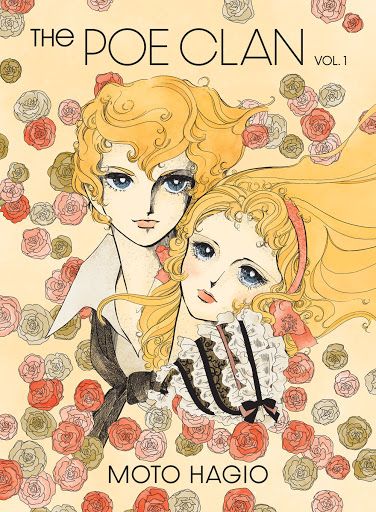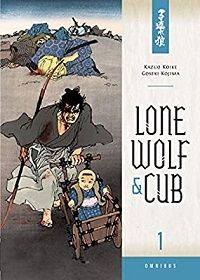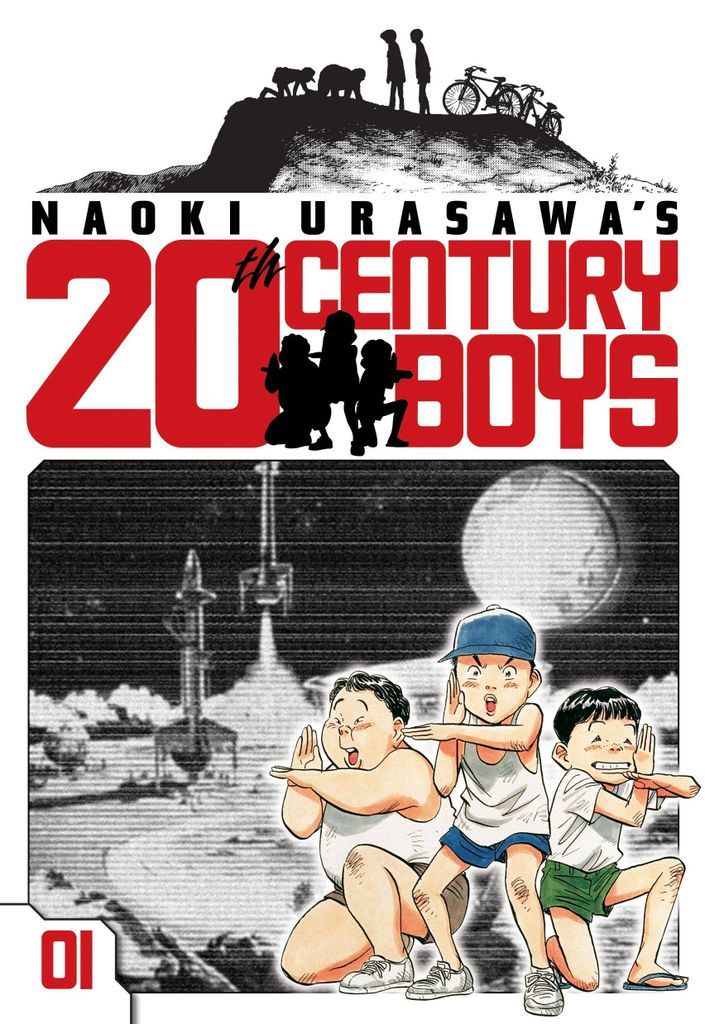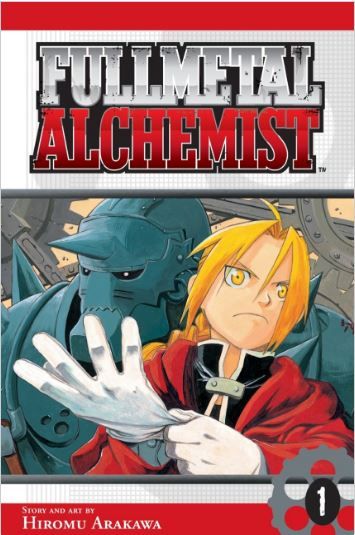There’s no better time to get into manga than now. Titles like My Hero Academia dominate the bestseller charts. New series launch every month, with even more licensing announcements being made regularly. But if there’s one thing I’ve noticed, it’s that we usually talk about manga in terms of series: the best series to read, the best shonen manga to pick up, or the best romance manga to swoon over. We don’t talk as much the creators: who are the most influential mangaka, who are the most famous mangaka, and who are the best mangaka?
Compiling a list of famous mangaka can be tricky. What are the criteria? Is it fame? The number of works in their back catalog? Their legacy? Keeping these questions in mind, I looked across all genres, all categories, and all time periods. I won’t lie. I didn’t include every significant manga creator here, but I made a point to cover names we should recognize and acknowledge, and whose works are readily available in English.
Osamu Tezuka
No list of famous mangaka would be complete without the God of Manga. Osamu Tezuka was so influential that he was also known as the Father of Manga and the Godfather of Manga. We cannot overemphasize his legacy. A descendant of Hattori Hanzo — a famous ninja whose name should be recognizable to aficionados of Japanese history — Tezuka became a mangaka after obtaining a medical degree. That educational effort didn’t go to waste, however. His medical knowledge informed some of his works including Black Jack and Dororo. Prolific beyond belief, he was considered by many to be the Japanese counterpart to Walt Disney. American film director Stanley Kubrick was a fan of Tezuka’s seminal work, Astro Boy, and had wanted him to be the art director of 2001: A Space Odyssey. Alas, Tezuka couldn’t accept the job, but can you imagine if he had been able to?
Notable works: Astro Boy, Black Jack
Go Nagai
Many mangaka get their start working as assistants to other creators. Go Nagai is no different. He began his career as the assistant to Shotaro Ishinomori. (Ishinomori is another famous mangaka, and the only reason he’s not on this list is because the bulk of his work isn’t legally available in English. Yet. Look for the iconic, genre-launching Kamen Rider in December 2021.) Nagai honed his work under Ishinomori’s tutelage and debuted as a professional mangaka in the late 1960s. He’d go on to be one of the first mangaka serialized in a newly launched anthology magazine called Weekly Shonen Jump. You might have heard of it. It’s the current home of My Hero Academia, One Piece, and Jujutsu Kaisen. Credited with pioneering the super robot, magical girl, and post-apocalyptic manga and anime genres, Nagai became infamous because his works incorporated eroticism. Considered scandalous at the time, most people wouldn’t even bat an eye today. Nevertheless, he influenced many creators including Kentaro Miura, the mangaka of Berserk, and CLAMP, who you’ll meet later on this list.
Notable works: Devilman, Cutie Honey
Moto Hagio

Widely known as the founding mother of shojo manga as we know it today, Moto Hagio also helped to pioneer BL manga. A member of the highly influential Year 24 Group, she pushed shojo manga to explore themes and topics beyond the simplistic storylines that dominated the genre before the 1970s. Perhaps her most famous work is Heart of Thomas, which exemplified the type of BL stories told at the time: beautiful boys who fell in love at boarding school but often met tragic ends. A big science fiction fan, she cites Isaac Asimov, Arthur C. Clarke, and Robert Heinlein as major influences on her work. And if you’re wondering what inspired her to become a mangaka? A manga by Osamu Tezuka.
Notable works: The Poe Clan, They Were 11
Riyoko Ikeda
Another member of the Year 24 Group, Riyoko Ikeda was one of the most famous mangaka during the 1970s. Her shojo manga featured historical settings and explored themes of gender and sexuality. Although she still works as a mangaka, she attended music school in recent years and became a singer. A good reminder that it’s never too late to learn something new and launch a new career.
Notable work: The Rose of Versailles
Kazuo Koike

Most of the people included on this list are both manga writers and illustrators. Sometimes they did both on a specific title. Sometimes they assumed only one role. Kazuo Koike was a manga writer, and only a manga writer. We can split hairs about whether that truly makes him a mangaka according to the traditional definition of the term, but I included him here because he’s worked on some foundational series. While he’s best known for his artistically violent works, Koike also used to be a professional mahjong player. He was passionate about teaching the next generation of manga creators, and he founded an educational course for this sole purpose. Graduates of the course include Hideyuki Kikuchi of Vampire Hunter D fame, Tetsuo Hara of Fist of the North Star fame, and Rumiko Takahashi, who is next on this list.
Notable works: Lone Wolf and Cub, Lady Snowblood, Crying Freeman
Rumiko Takahashi
Rumiko Takahashi is one of the most famous and commercially successful mangaka of all time — both in Japan and worldwide. She has won many awards, including the Grand Prix de la ville d’Angoulême, and has been inducted into the Eisner Hall of Fame. Her works have enjoyed great popularity among English-language readers and have been widely available since even before the first manga boom of the early 2000s. We’re talking back in the day, when manga was still mirror-imaged for North American readers versus preserving the familiar right-to-left format today.
Notable works: Urusei Yatsura, Ranma 1/2, Inuyasha
Akira Toriyama

Akira Toriyama wasn’t always a mangaka. He used to work at an advertising agency. After he quit, he entered a contest for aspiring mangaka. While he didn’t win, Toriyama received encouraging feedback from the judges, and he soon made his professional debut as a mangaka. He wasn’t an instant success, but he kept at it. Eventually, he found his stride with Dr. Slump and then, of course, Dragon Ball. The Dragon Ball manga was ridiculously popular, going on to become the top-selling manga at the time. Even today, almost three decades after it ended, it’s still the third bestselling manga of all time. The anime adaptation of Dragon Ball became even more famous than the source material, especially outside of Japan, and is widely credited for catapulting anime to become the global sensation it is today.
Notable works: Dr. Slump, Dragon Ball
Naoko Takeuchi
Naoko Takeuchi has had many ups and downs during her career. Prior to becoming a manga creator, Takeuchi used to work as a shrine miko, her experiences later informing a certain character from Sailor Moon. She began her career as a mangaka with a series of oneshots and shorter works, but she eventually came up with the idea that would later become Codename: Sailor V. When a studio wanted to make an anime adaptation, she reworked the idea by adding four more girls and Sailor Moon was born. And good thing, too! Megumi Ogata, the voice actress for Sailor Uranus, helped introduced her to Yoshihiro Togashi, the famous mangaka behind YuYu Hakusho and Hunter x Hunter. The two would later marry and have two kids. A mangaka meet-cute!
Notable works: Sailor Moon
Naoki Urasawa

Some mangaka worked other jobs before finding their life’s calling. Others, like Naoki Urasawa, have been creating manga their entire lives. What do I mean by that? Urasawa began drawing manga when he was 4 years old. Sometimes you know early. A couple decades later, Urasawa would make his professional debut. He has created some of the most renowned manga ever published. If you had to pick one seinen manga to read, you can’t go wrong with an Urasawa work. He’s also a musician and believes that creating manga and creating rock music have a lot in common. That said, if you’ve ever wondered why most Urasawa manga isn’t (legally) available in digital format, that’s because he prefers print.
Notable works: Monster, 20th Century Boys
CLAMP
CLAMP isn’t a single mangaka, but rather an all-woman team of creators. Formed in high school between a group of 11 friends, the membership dwindled until the four members we know today remained: one writer, Nanase Ohkawa, and three artists, Mokona, Tsubaki Nekoi, and Satsuki Igarashi. The group originally started creating doujinshi, or amateur fan comics. In fact, RG Veda, their first professional series, started out as a fan comic. It was that amateur work that got the attention of a manga editor at Shinshokan. Famous for their stylish artwork, they’re also equally infamous for leaving series incomplete.
Notable works: X, Cardcaptor Sakura, xxxHolic
Hiromu Arakawa

Compared to the other mangaka on this list, Hiromu Arakawa had a later start in the industry. Born and raised on a dairy farm, she helped with the family business for several years after graduating high school. But if you have a dream, never let it die. Even as she worked on the family dairy farm, she took lessons in oil painting. Eventually, though, she moved to Tokyo and started working as a manga assistant at Square Enix. She published a couple one-shots before beginning work on Fullmetal Alchemist, considered by many — including yours truly — to be one of the best manga series of all time.
Notable works: Fullmetal Alchemist, Silver Spoon
Eiichiro Oda
Eiichiro Oda is the creator of the swashbuckling pirate saga, One Piece — which also happens to be the #1 bestselling manga series of all time. And it will be a very long time before another manga even comes close to taking that title away. In fact, it’s the top-selling comic series in the entire world. Oda always wanted to become a manga artist and submitted his first work at the ripe old age of 17. This work won many awards and landed him a job at Weekly Shonen Jump as, you guessed it, a manga assistant. He drew a couple one-shots before One Piece began serialization in 1997, which is still ongoing to this day. The other mangaka on this list have multiple titles in their bibliography, even if they may only be known for one. But Oda shows us that you can strike gold fresh out of the gate. It’s rare, but it happens.
Notable work: One Piece
As I said at the beginning, this isn’t a comprehensive list of famous mangaka. I aimed for variety versus covering all of the juggernauts of shonen manga, of which there are many. Nevertheless, it does cover some major names you should know, and I encourage you to look further into the mangaka who inspired them, who are their peers, and who are their rivals.
Further reading:
- New to manga and need a primer on the format? Here’s a guide.
- Want some suggestions of manga to read? Here are some recommendations.
- Struggling to find print manga in these trying times? Here’s a guide to digital manga reader apps. (Just don’t expect to find a lot of Naoki Urasawa manga.)
Source : 12 Famous Mangaka You Should Know









